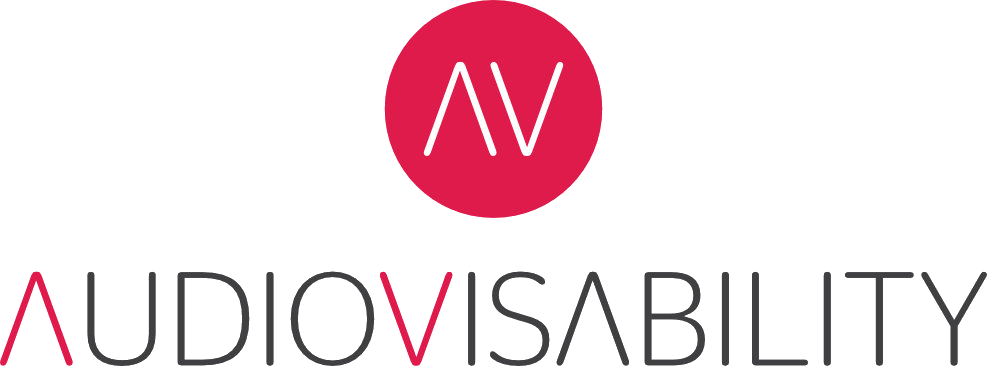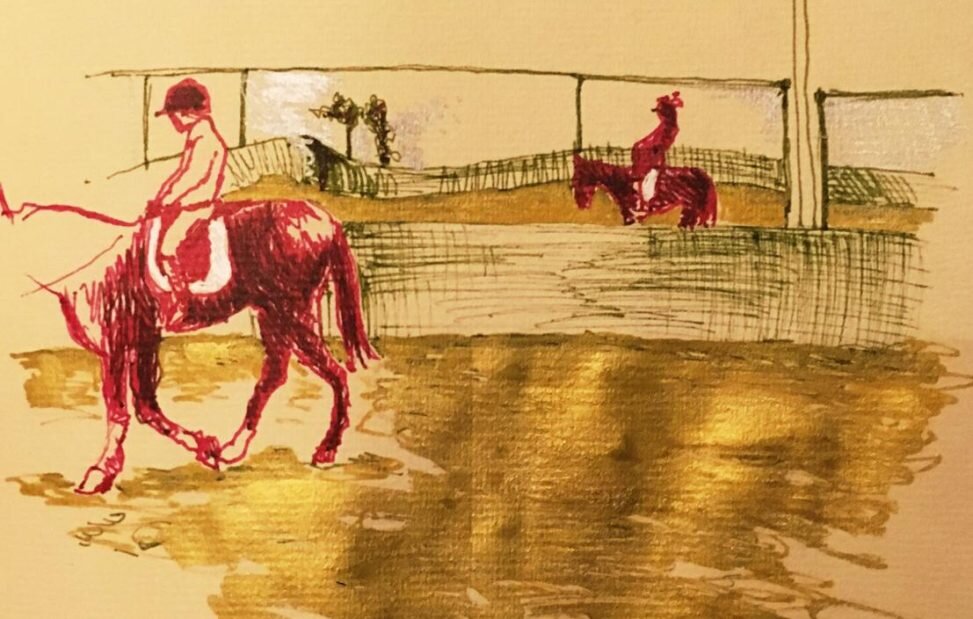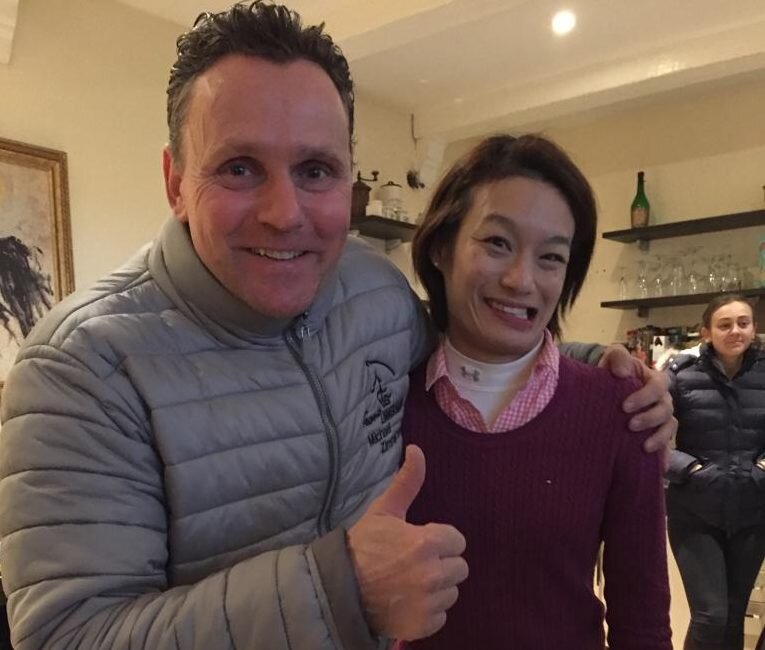Dressage and the Art of Music Composition
Despite winning bronze and silver at global and Paralympic level as one of Singapore’s most decorated sportspeople, Laurentia Tan’s needs as a deaf person have never been professionally met. Together with Audiovisability, she began an incredible music journey. Report by Melissa Mostyn
What is dressage to you? Ram-straight riders in posh 19th century dress, bouncing on glossy cantering horses? Ceremonious TV coverage, with enough reverential commentary to make you glaze over?
A sport this cultured doesn’t give you the raw expressiveness of say rugby, or even tennis, with its effortful grunts and sticky polo-shirts. There’s no playing to the crowd en masse, or sinking to the knees, drenched in sweat and tears of joy, upon scoring points.
Rather, a contemplative mood descends. Rider and horse converse silently as they navigate the course they’ve carefully memorised for months together. What might look like plain walking or trotting to you and me, is in fact an art of horse mastery, honed over years of coaching, hard work and dedication.
Dressage is the world’s oldest riding discipline, spanning over two millennia. Its forefather, the Greek military warrior and philosopher Xenophon, devised the concept as part of cavalry training in his book On Horsemanship – hence the French, dressage (training).
Today, it’s internationally recognised as a competitive sport. Top marks go to rider-and-horse partnerships that not only follow a series of movements set out in tests, but also do it with the utmost technical skill and artistry – to the extent that it becomes second nature to both.
Ranked No 4 in the world, Laurentia Tan has represented her native Singapore in Para-dressage for ten years. She’s participated in three Paralympic Games: Beijing 2008, London 2012 and Rio 2016 – and three World Equestrian Games (WEG), picking up four bronzes and two silvers along the way.
At Beijing 2008, she became Singapore’s first Paralympian and the first Asian to win medals. As one of the country’s most decorated sports personalities, she is included in their Sports Hall of Fame today.
So when she came a disheartening seventh in individual freestyle at the 2018 WEG in Tryon, North Carolina in USA, Tan knew her strategy had to change. That performance contrasted starkly with her silver-winning individual championship test at the same event – not least because it was performed in silence.
For too long, Laurentia Tan has had to address a dichotomy of access issues that relate to being both disabled, and deaf. The two rarely converge, because the circumstances she works in often accommodate one, and not the other.
Meeting her in person at the Southbank Centre – and again a few weeks later at a deli café in Wendover, accompanied by her mother, Jannie – it’s becoming clear how complex Tan’s situation is.
The Paralympian has athetoid cerebral palsy, a mixture of high- and low-tone musculature caused by impaired motor co-ordination. Aged five, she began riding as part of physiotherapy to enable her to strengthen her back and weight-bear more effectively.
She could have done that in Singapore – except her parents had already moved to the UK, to give her more opportunities as a deaf person.
(Today she divides her time between her London residence, Singapore and Cologne, in Germany – where one of her two coaches and horse, Fuerst Sherlock, live. The other is based in Kent.)
Being the only physically disabled student at Mary Hare School for Deaf Children, the school’s timetable had to be changed so most subjects could be taught in her classroom.
“I couldn’t walk very far,” Tan explains. “Continually going to separate rooms for different subjects wore me out. My teachers noticed this and spoke to the deputy head. I felt bad about it, because the timetable changes separated my class from the others for a year. All that just for me.”
Often, she’s compelled to persevere, rather than ask for access improvements, out of guilt. (Ironically, it’s also become a mark of her tenacity.) In her schooldays, that included handwriting her revision like her peers instead of using the heavy laptop offered by the educator – even though it took her much longer.
“I wanted to be normal, to be the same as them,” she opines. But it’s Tan’s environment, not her deafness or disability, that creates the barriers. After all, the world that we live and work in is a societal construct built with hearing, non-disabled people first and foremost in mind.
In Wendover, where I’m meeting them for lunch with my two young children, Jannie Tan is remembering her daughter’s childhood: “When she started riding, Laurentia was incredibly floppy. She couldn’t sit up at all.” We both glance at the well-groomed adult who’s just perched onto her seat, and she smiles back.
All of this is useful insight for me. Like Jannie, I parent a child with cerebral palsy, and I’ve often wondered what the starting blocks were for the Paralympians who regularly smash world records.
Paradoxically, in sport Laurentia’s deaf access issues now precede her disability requirements – particularly in freestyle, the only dressage test set to music.
“I can’t hear the music at all,” she laments, “I can’t hear where I am in its timing, never mind if I have more time or less to do a specific movement.”
In the arena, a sign language interpreter signals when the music starts and ends, but competitive rules prevent them from doing any more. Although international sport regulatory bodies recognise the need for BSL interpretation, there’s no classification for deafness in the Paralympics, limiting scope for manoeuvre. (The International Paralympic Committee – IPC – have devised 52 sport classifications, including three or four for amputees.
Having gained both bronze and silver in the past for the same test, Tan has already exemplified her remarkable gutsiness. Nevertheless, she no longer feels that is enough – which made meeting Ruth Montgomery, artistic director of Audiovisability, at a 40th birthday party in April 2018 perfect serendipity.
“Laurentia wanted to improve her relationship with music,” recalls Montgomery in an email. “Sometimes she rides on her horse to classical music such as Tchaikovsky and Mozart, or digital soundtracks by specialist dressage composers. Sometimes it can even be off a film. The whole thing is purely instrumental, with changes to stimulate interest and a variety of set movements.
“Regardless, she finds it really hard to understand and meet the timings of the soundtrack she is riding to. Currently, her coaches or her parents choose it for her.”
Given the intuitive bond developed over time with all her horses – getting to know their personalities, tempos, styles, likes and dislikes – having to relinquish creative control to others must be maddening. Yet Tan has tolerated it with grace. “At least I can focus on the horse and its movements.”
Montgomery is ideally placed to turn that around. As a successful deaf flautist and music teacher, she’s had to confound prejudices of her own around music and deafness.
“I think while disability comes in all forms,” she told me, “deafness is the least understood. Do you think so? One composer was surprised that I could speak in music terms, telling him what to do with composition, and even having a little debate!”
She’s right. Deafness comes in many forms, with myriad factors shaping the kind of person we become: not just how we acquire deafness, what type and at what age, but also family, education, social circle, workplace, geography, tastes and interests.
Consequently, our access requirements cover a whole spectrum. There’s no one way to be deaf: we could have enough residual hearing to enjoy music – perhaps supported by hearing aids or cochlear implants – or we could rely on vibrations. Some utilise both, while others disregard sound altogether – favouring signed performance instead.
Audiovisability capitalises on this diversity. The initiative aims to bring out a greater appreciation of music in deaf people via a variety of art forms, disciplines, and cultures. Montgomery, again: “I feel that the world generally does not quite understand our deafness and our culture, but they know what music is. By putting the two together, it opens up a new perspective.”
Thus far, the various multidisciplinary art group projects delivered under the Audiovisability banner have included live performance art, dance, textiles, photography, BSL poetry, creative writing, and even refugee true-life stories. As a result, Montgomery has more drive to instill in other deaf people the same passion that she has had all her life.
Seeing Tan’s disappointment after her WEG freestyle test in Tryon with Audiovisability producer and fellow musician, Eloise Garland, was exactly the motivation Montgomery needed. “She kept saying, ‘I’m deaf, can’t hear the music,’ and how unsettled Sherlock was.”
Their party conversation, five months earlier, couldn’t have come soon enough. By happenstance film director Louis Neethling was also present and, together with Montgomery and Tan, started enthusing about what they could work on together.
With an Arts Council England (ACE) grant, work on a three-month-long research and development project (R&D) began – with Neethling filming for posterity.
The objective was to facilitate multifaceted learning through a combination of music lessons and practice, collaborative discourse with musicians and composers, mock dressage tests, and experimentation with haptic (vibrotactile) technology. (More about that later.)
It started with building Tan’s music literacy. An introduction to a range of styles – from rock to ballet to jazz – enabled the sportswoman to learn changes in time signature, which influence how the music flows. Tim Reyland, drummer with the indie band Secret Company, collaborated with Montgomery and Garland to teach drumming and piano-playing with written notation.
From a deaf-led perspective these sessions are a highly effective music teaching method, because they utilise beat-heavy, or vibration-rich, sounds like drumming to instil basic awareness of pace and rhythm. Tan was able to pick up quickly and experiment with creating layers in Samba music on the same day, including intro and outro ideas.
Next, Tom Hunt met his deaf client for the first time. The distinguished composer has created original freestyle music for many other celebrated equestrians, including Charlotte Dujardin (GBR), who he helped win gold at the Rio 2016 Olympics. That he has had to devise Tan’s freestyle music – including the Tryon WEG score – in her absence is a powerful statement on her disenfranchisement.
Hunt compensated by making notes on the tempo of Sherlock’s movements based on a rehearsal video not set to music before changing the floor plan – all the while keeping to the sport’s rules and regulations. Employing piano, strings, brass, and some vocals going ahhh, unsurprisingly Tan found it inaccessible: having never met her, he couldn’t possibly envisage how she might interpret it as a deaf person.
I am similarly afflicted. Although I’m able to distinguish certain textured sounds with my cochlear implant switched on, I could never quite ‘get’ the music graphics screen showing changes in pitch and volume, and when instruments weave in and out – particularly with classical elements. I wouldn’t have the confidence to ask an esteemed composer to explain them in plain terms.
There had to be another way. Enter the vibrotactile or ‘woofer’ vest, a piece of haptic technology worn on the torso that connects you wirelessly to the music via pulsing vibrations that can be augmented, or otherwise. We can guess what happened when Tan put it on and plugged into her rehearsal video.
The woofer vest cannot in any way monopolise the deaf person’s music access, however. Being just one aspect, vibrations cannot convey other, subtler, musical elements. “I felt it was very important to give Laurentia a real music learning experience, as opposed to just putting the vest on and going for a ride,” Montgomery expands.
In other words, the R&D highlights the need for greater collaboration between rider and composer, equivalent to that already practised by fellow competitors. “I wanted to build team spirit: for Tom Hunt to get to know Evelyn, and for us and Evelyn to identify Laurentia’s tastes and personality – which I believe will bring out the best of her in future games.”
“Evelyn,” of course, is the famous deaf percussionist Dame Evelyn Glennie, who also collaborated in the project. That her role supersedes the woofer vest proves Montgomery’s point: the Dame and Tan share common ground, in terms of exploiting their sense of feeling with certain tools to help facilitate greater flexibility and control.
For Glennie, it’s a wide range of beaters she can choose from. For Tan, among other things it’s her reins, which have eight finger loops; four on each side. (Some riders choose two, four or six, while others forego them altogether.)
Certain subtle movements by the equestrienne then act like a telephone wire, signalling Sherlock to shift. Similarly, Glennie takes her cue from the beaters’ reverberations in her fingers, swapping where necessary. In their first lesson together, that motivated them to discuss mood, emotions, and tone ‘colours’, and how the score could be tweaked.
Identifying the piano as the “beef” of the computerised score, Hunt re-wrote it for Marimba, the deep-toned xylophone that Glennie works with. In the subsequent recording Tan lay below the giant instrument, watching for maximum sensory impact.
Through her animated performance, Glennie was thus able to relay to her student the changes in rhythm and the repetition of ideas – cultivating a new love for music.
“I so wish I could have an orchestra visible to me in the riding arena,” Tan muses, “so I can understand what I’m feeling in the vest.” Winning gold, with her teacher playing, is a dream she wants to pursue.
“It really needs exploring,” Montgomery asserts. “Everyone else Laurentia is competing with has the advantage of being hearing and able to follow the music effortlessly.
“Not only will she learn inside out from watching Evelyn play, learning to read a little bit of music, seeing the structure of it and so on, it will also enable her to choreograph her own floor plan [more independently].”
The new Marimba recording was finally put to the test – as it were – over a weekend in Cologne. In the training arena, with the woofer vest, the Para-dressage rider floored everyone present with her newfound ease. That this was the same freestyle routine that had upset her in Tryon was hard to believe.
Tan’s German coach, Volker Eudel, booked a two-part mock test with the country’s National Dressage Judge, Michael Zimmermann, to take place the next day: one with the vest, one without. A BSL interpreter was present throughout. (The judge was not told until afterwards which part included the device.)This was the R&D’s make-or-break moment. Flagging up any difference made would promote the idea of using vibrotactile technology as an adaptation for future competitive events. Repercussions – not only for Tan, but also other deaf and disabled competitors in sport – could be unprecedented.
With the vest on, the score was 6% higher. Elation rippled palpably through those watching in the arena amidst the shivering mid-December cold. Everyone who shook hands did so securely and with delight. As a long-term investment, the impetus to take it up with the IPC for their consideration, as well as the Singapore Sports Institute (SSI) who sponsors the Para-dressage rider, was clear.
I am proud to have been one of the witnesses that day. Whilst not fully privy to Tan’s music journey, I relate to her as a deaf person and someone who loves riding (interest as a parent-carer notwithstanding). I rode one of the horses she trains with while Sherlock was on a break and, having not done so for three decades, I can vouchsafe for the glorious sense of freedom the sportswoman gushes so often about.
Performing freestyle in a public arena though, with the audience and judges scrutinising my and my horse’s every move? The very notion sends my heart palpitating with fright. Even with my favourite BSL interpreter there, my own isolation would surely be writ large. If like me, you want to see Laurentia Tan convey to gold-winning near-perfection an art that has existed for 2,000 years, the least you can do is to invest.
All drawings by Melissa Mostyn 2019. www.msmelissamostyn.com











